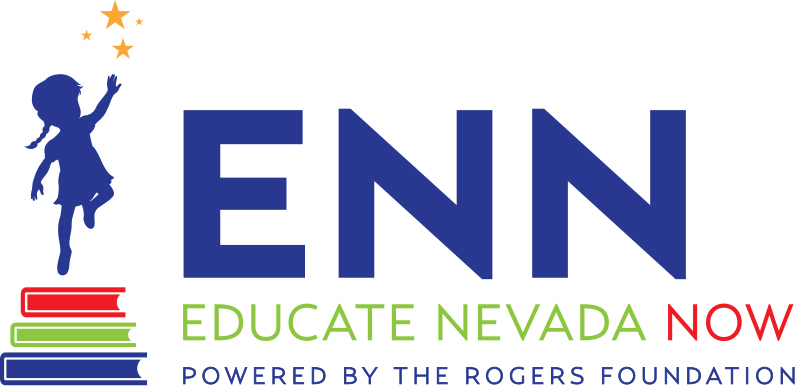New Funding Formula Hinges On Success Schools Model – But Are The Numbers Accurate?
With all the recent changes in the Nevada legislature, several deadlines have been pushed back leaving the community with a little less than 7 weeks to process what might be the most important bill and biggest impact to education – the new funding formula.
Until we see a bill we are left speculating on what it will contain and holding on to what we do know.
The Nevada Department of Education (NDE) has mentioned that they will suggest the Successful Schools model as the base model for funding for the new formula, and set $6,197 per pupil as the goal but a closer look at the model casts doubts on the accuracy and adequacy of the figure and the methods.
What is the Successful Schools model and how is it defined?
The Successful Schools model takes the expenses of a handful of schools that perform better in comparison to their peers or that have shown growth results. The idea is that these schools are successful because they have the “proper resources” and thus their expenses should be the baseline for what it costs for all schools to be successful. In this case the average expense are $6,197, according to the NDE model.
To come up with the model, NDE used 58 schools, the majority from Clark County School District.
You can view the list of schools here.
Concerns with using the model
-
The dollar figure doesn’t appropriately reflect the cost of Successful Schools and falls several hundred dollars per-pupil short of the actual expenses.
-
Even though these schools are labeled Successful Schools, they only have an average achievement rate of 60 percent, and middle schools have a math proficiency averaging at 35 percent.
-
The APA funding study recommends it as a stepping stone towards full adequacy, but what is the guarantee that we actually move beyond this model? It took over 50 years to update the old formula, will it be another 50 before we set our students up for success?
-
The schools selected don’t accurately reflect the demographics of the majority of Nevada public schools. Forty percent of the selected schools have less than the statewide average of low-income, English learners, and special education students. On average, successful schools have 13.6% special education students compared to the statewide average of 12.3%, they have 53.8% low income students compared to the statewide average of 58.3%, and 15.5% EL students compared to the statewide average of 16.8%.
Funding Concerns
Based on the data from the Successful Schools model here is what we know:
- The estimates don’t include District-level costs which could run anywhere from ten to 15 percent more. This dollar figure assumes schools can operate without a payroll department, a legal department, a superintendent and other district-level resources that keep school districts running. This means the Successful Schools base funding proposed figure is at least $600 per-pupil short. It also does not account for transportation costs (which are currently funded through the state’s per-pupil allocation to schools). This is an additional $400 per pupil not currently accounted for in the Successful Schools per pupil funding.
- The model doesn’t take into account money raised by the school PTA’s and other fundraising events and activities. Via a quick online inquiry, ENN found PTA’s at many of the Successful Schools raised tens of thousands of dollars, in some cases as much as $100,000, and some even paid for entire teaching positions out of these funds. There is no doubt that these dollars contributed to the success of these schools and by not taking those funds into consideration, we have an inaccurate estimate of successful school costs.
- Several schools on the list are magnet schools and those additional dollars are not taken into consideration. This assumes that magnet school resources don’t contribute to academic success which runs counter to everything we have heard about magnet programs.
In summary the following were not considered costs that contributed to the success of these schools:
-
District-level costs
-
Magnet school dollars
-
Transportation costs
-
Dollars from fundraising events and donations
If the above funds were not considered, that means the $6,197 figure is not accurate. This is concerning given that it’s the dollar figure the new formula would be hinging on. The bottom line – will the new funding formula mean more resources for our students, or more of the same?
Perhaps most importantly, the purpose behind most modern, cost-based funding formulas across the country is to link education funding to the resources necessary for all students to achieve state standards. When the legislature studied the funding necessary to meet this goal, it found the state needed to provide about $9,500 per pupil, plus additional funding for at-risk, English learners, special education, and gifted students. In most other states that start off with this model, the difference between the Successful School funding levels and adequate funding are not terribly far off. In Nevada, both targets are wildly different – illustrating how current funding levels are so woefully inadequate.
An actual cost-based funding formula will set in law a phase-in to reach the recommended adequate funding levels to ensure all students have the opportunity to succeed. A formula based on past resources and expenditure levels, such as Successful Schools, will not, despite the name, set our students up for success.
This bill will be a big deal. Input from stakeholders and the community is critical to its success. We sincerely hope legislators will take this into account, especially as we only have a few weeks left of the legislative session. This is too important to not include parents, teachers, students, and everyone impacted.

0 Comment